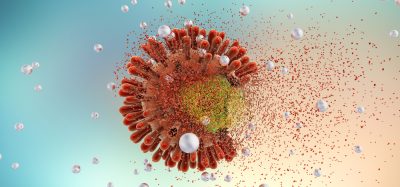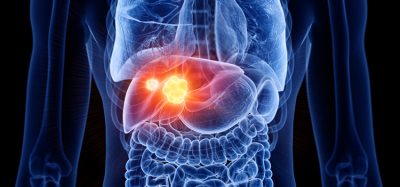Nanoparticles used to breach lung mucus barrier
Posted: 4 August 2015 | Victoria White
Researchers have used nanoparticles to breach the human airway mucus barrier of lung tissue – a finding that could lead to effective drug delivery systems…

Researchers may have discovered the first gene delivery system that efficiently penetrates the hard-to-breach human airway mucus barrier of lung tissue.
Scientists have designed a DNA-loaded nanoparticle that can pass through the mucus barrier covering conducting airways of lung tissue – proving the concept, they say, that therapeutic genes may one day be delivered directly to the lungs to the levels sufficient to treat cystic fibrosis (CF), chronic obstructive pulmonary disease, asthma and other life-threatening lung diseases.
“To our knowledge, this is the first biodegradable gene delivery system that efficiently penetrates the human airway mucus barrier of lung tissue,” said Jung Soo Suk, Ph.D., a biomedical engineer and faculty member at the Centre for Nanomedicine at the Wilmer Eye Institute at Johns Hopkins.
The mucus barrier protects foreign materials and bacteria from entering and/or infecting lungs. In healthy lungs, inhaled matter is typically trapped in airway mucus and subsequently swept away from the lungs via beating activities of cilia, or small, hairlike strands, to the stomach to be eventually degraded. Unfortunately, Suk notes, this essential protective mechanism also prevents many inhaled therapeutics, including gene-based medicine, from reaching their target.
Genes or drugs could be placed inside the biodegradable nanoparticle wrapper
His team’s experiments with human airway mucus and small animals, Suk adds, were designed as a proof-of-concept study demonstrating that placing corrective or replacement genes or drugs inside a man-made biodegradable nanoparticle “wrapper” that patients inhale could penetrate the mucus barrier and one day be used to treat serious lung disorders. What’s more, because a single dose might theoretically last for several months, patients would experience fewer side effects common to drugs that must be taken regularly over long stretches of time.
Suk says their work with nanoparticles grew out of failed efforts to deliver treatments to people with lung diseases. In patients with CF, for instance, they experience a buildup of excess mucus caused by impaired ciliary beating, resulting in an ideal breeding ground for chronic bacterial infection and inflammation. This pathogenic process not only worsens patients’ quality of life but it also makes the airway mucus harder to overcome by inhaled therapeutic nanoparticles.
Most of the existing drugs for CF help clear infections but do not solve the disease’s underlying problems. A couple of recently approved drugs designed to target the underlying cause of CF require daily treatment for the entire lifetime and can benefit only a subpopulation of patients with specific types of mutations. Yet this study, Suk notes, has demonstrated that delivering normal copies of CF-related genes or corrective genes via the mucus-penetrating DNA-loaded nanoparticles could mediate production of normal, “functional” proteins long term. This could eventually become an effective therapy for the lungs of patients, regardless of the mutation type.
Genes delivered via the nanoparticles resulted in production of protein to levels superior to gold-standard platforms
For its design, the team developed a simple method to densely coat the nanoparticles with a nonsticky polymer called PEG. They showed that these nanoparticles retained their sizes at a physiological environment and are capable of rapidly penetrating human airway mucus freshly collected from patients visiting the Johns Hopkins Adult Cystic Fibrosis Programme directed by Michael Boyle, a co-author of the paper. The team also made the whole delivery system biodegradable so that it would not build up inside the body.
To test whether the system provides efficient gene transfer to the lungs of animals, the researchers packed them with a gene that makes light-generating proteins once delivered into the target cells. They demonstrated that inhaled delivery of the genes via the mucus-penetrating nanoparticles resulted in widespread production of the protein to levels superior to gold-standard, nonviral platforms, including a clinically tested system. In addition, they showed that the treated lungs lit up for up to four months after a single dosing.
The research findings are publishing in PNAS.
Related topics
Drug Delivery, Gene Therapy, Nanoparticles
Related conditions
Cystic fibrosis
Related organisations
Johns Hopkins
Related people
Jung Soo Suk PhD, Michael Boyle






